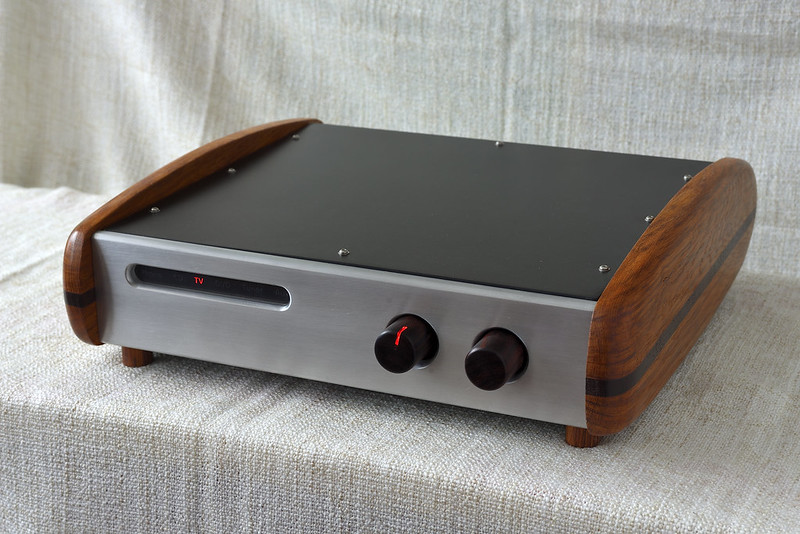Thanks guys and sorry for the long silence - but you know I don't like to hurry.
The handles/feet discussion was really helpful and enabled me to make up my mind. I experimented on a scrap with carving a finger recess, but it was too small and looked a mess, so I decided to add a little handle and some feet instead. Separate feet, a bit like your amplifier Pete, but square not round. Chris, I like the idea of a finger ring but haven't risen to it this time. Nevertheless, I shall send you a cheque for your share of the profits. Indeed, it's in the post! :---)
I used a scrap of lovely old mahogany, left over when I turned a discarded Victorian table leaf into a shelf and needed to cut one corner out. I kept the corner, since the wood was such a nice colour and so easy to work.
For the handle I settled on a simple tab. The top side is horizontal, the underside is bevelled at the same 1:8 slope as everything else, as are the ends. In use, it's the same depth as the feet. I cut them square, with the sides bevelled to the same angle. I didn't photograph every slow, plodding step, but this is how I laid them out, drilled holes and planed them off level.
In cutting the sides, I thought of the job as being like cutting dovetails, so missed a trick. If I had laid them out the other way round, I would have been able to plane the bevel rather than chisel it and the holes would have all been properly central. Never mind, I'll do that next time.
Having made the feet, I bought some Osmo Polyx and applied a few coats. It looked so nice I decided to finish the inside as well, so please don't tell me that was a mistake...
And here it is, completed, only six months after first cutting up the alder wood. :lol:
I'm sure everyone reading this will know how, when you finish a project, you mostly see the mistakes. I do, but I hope other people won't, and will be distracted by something else.
I'm pleased with the made-up-as-I-went solution to keeping it shut. The front flap is free to lift a litle, then hangs on the angled slope in the corners. No need for catches, magnets or hardware.
In use, the flap folds down level.
It'll do for now!


































































